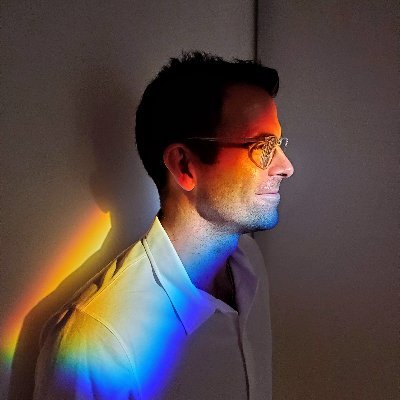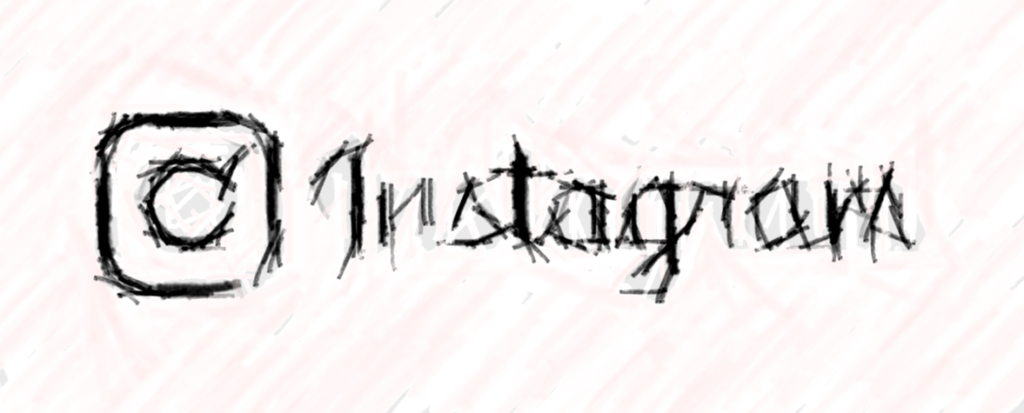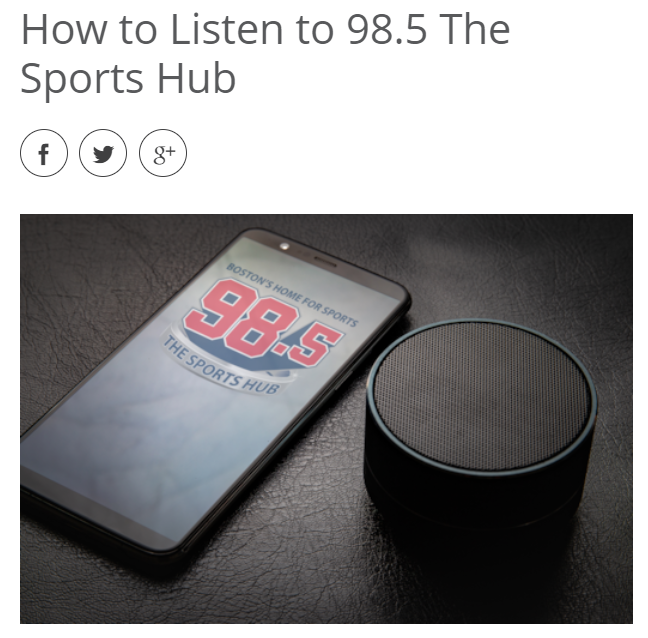
Imagine for a moment there’s a highly successful media platform. Hundreds of millions of consumers use it and love it. As a result, it has become highly profitable. But over time, the corporate team comes to realize consumers are gravitating away from the platform.
It’s a slow leak, but it’s very real, and evident in the numbers. The content is good, but users are embracing different media options for entertainment and information. The platform remains viable and popular, but it’s not what it was. And the consumer shift is clear, both in the metrics and even anecdotally.
It may sound like I’m talking about broadcast radio. But the entertainment medium whose momentum has slowed is none other than Instagram.
It’s barely a decade old, and had the good fortune of being acquired by Facebook just a couple years later for $1 billion. Instagram has been hugely successful, attracting more than one billion monthly active users.
There’s just one problem. In a world that has migrated to video, Instagram’s brand is all about photos.
Now, of course, video is also a component of Instagram, but it’s not the dominant driver. And Instagram’s powers-that-be, led by CEO Adam Mosseri, find themselves at a strategic crossroads where they have tough choices to make.
 They could deny they even have competition and instruct their team never to mention “those other companies” using video in the social space.
They could deny they even have competition and instruct their team never to mention “those other companies” using video in the social space.
Or they could claim that video is just another fad, and that photos will always be the preferred way for consumers to express themselves and connect with each other.
They could downplay their competitors’ growth, and claim that users will never abandon good old Instagram.
But they’re doing none of these things.
In fact, they’re owning the fact photo-sharing has taken a back seat to video in recent years. And they’re leaning in to changing their platform to keep up with the times – in a very transparent way.
Last week, Mosseri released a video that made this bold statement;
“We’re no longer a photo-sharing app or a square photo-sharing-app.”
That would be akin to one of radio’s major CEOs announcing her company is no longer about just transmitters and towers.
In the two-minute video, Mosseri went on to credit his competitors by name, acknowledging their progress:
“Let’s be honest, there’s some really serious competition right now. TikTok is huge, YouTube is even bigger, and there’s lots of other upstarts as well.”
And he stated flat-out that according to their research, it’s about video – and that’s where Instagram is headed:
“The number one reason people say that they use Instagram in research is to be entertained…so actually, this past week in our internal all-hands, we shared – or I shared – what we’re trying to do to lean into that trend – into entertainment and into video.”
Mosseri went on to use words like “experiment” and “new versions” to let users know changes at Instagram are coming, all designed to make the platform better. These words are code for change – something Wall Street eschews. But Mosseri’s eye is on the big prize – casting a new future for Instagram.
better. These words are code for change – something Wall Street eschews. But Mosseri’s eye is on the big prize – casting a new future for Instagram.
Will he be successful? Can Instagram play on the same field with TikTok and other comers – and come out on top?
Notably, Mosseri isn’t playing defense. He’s not holding the line or explaining that Instagram has been successful for 11 years, and won’t overreact to new players on the field. On the contrary, he is acknowledging the competition, embracing change, and refusing to stand still.
In fact, Mosseri outlined four key areas where Instagram will be refocusing their efforts:
- Creators (noting a shift in power from institutions to individuals)
- Video (as discussed)
- Shopping (thanks in no small part to the pandemic)
- Messaging (the platform will be less about the Feed and Stories versus personal connection)
For all you Igers, these changes will undoubtedly seem foreign and even disruptive. They might even be uncomfortable. For brands, you might want to check out Lori Lewis’ AllAccess feature “Merge” where she offers tips about how to think about these changes to the Instagram platform.
Notably, Mosseri admits that while the IG team has a vision of where they may end up, there could very likely be unforeseen changes. That’s the way the worlds of media, technology, and commerce roll, and he acknowledges today’s moves may get shifted along the way.
media, technology, and commerce roll, and he acknowledges today’s moves may get shifted along the way.
He also promises more “explainer videos” like the one below that share the company’s thinking, why they’re doing these things, and why they hope it will be embraced by users.
Is this “Instagram 2.0” – a new iteration of the massively successful photo-sharing site? We’ll have to see. But credit to the company and Mosseri for putting the initiative out there.
For a century now, broadcast execs have played the game in a much more secretive way. They quietly hatch their plans, they foist them on the public, and they offer little explanation for why they make changes they do – formats, personnel coming and going, or anything else. Because they didn’t have to.
Today, that old school attitude from the past – “Where else are they going to go?” – is obsolete, arrogant, and irrelevant. Consumers have many places to go as we have learned the hard way. To remain a viable force in people lives, broadcast radio has to do more than quietly make subtle tweaks.
have learned the hard way. To remain a viable force in people lives, broadcast radio has to do more than quietly make subtle tweaks.
The fact is, radio companies have made some important strides in recent years. But they have not been especially well-communicated to listeners, advertisers, or both. Or communicated at all.
Video, mobile, smart speakers, podcasts, streaming channels – all improvements that allow fans to enjoy content wherever and whenever they like. Along with the broadcast signal, they are new conduits of consumption and content that have become more ubiquitous. During the pandemic, all these key touchpoints experienced growth. In many ways, they have a similar ring to Instagram’s new embrace of video.
They’re all a part of what could be Radio 2.0. 
But the ways in which they are packaged to radio’s constituents are critically important to a new initiative, designed to draw attention to an established medium, platform, or brand.
When we rolled out Classic Rock in the ’80s, there was much about the format that we didn’t know. The ratings and research were helpful, of course. But so was talking with listeners and advertisers about their perceptions and needs.
We encouraged our clients to roll out the “Ask the PD” feature, looking for feedback from listeners. As we gathered their reactions, suggestions, and yes, criticisms, we were able to create improvements – no-repeat days, guest DJ shows, A-to-Zs – that addressed these needs.
All were then teed up – week after week, month after month – by the PD in promos similar to Mosseri’s videos. They became an effective way of looking listeners in the eye, talking about research and other feedback, and then launching new features and offerings. These campaigns worked, especially because we drew attention to them, rather than hoping listeners would figure it out for themselves.
 Experimentation, innovation, and considered changes would likely be welcomed by those who use broadcast radio, either as a source of entertainment and information, and as a key marketing vehicle.
Experimentation, innovation, and considered changes would likely be welcomed by those who use broadcast radio, either as a source of entertainment and information, and as a key marketing vehicle.
Adam Mosseri is taking some big risks with his highly-established, massively successful social media brand. But he’s telling us the story of his brand, the social media landscape, and where his saga is now headed.
Radio’s journey is far more interesting, storied, and historic. The medium has been around since Model Ts and F.D.R. From Paul Harvey to Howard Stern to Delilah. From transistor radios to iPhone apps and smart speakers.
It’s a great story that needs to be told.
Here’s Adam Mosseri’s video:
Changes are coming to video on Instagram 📺
At Instagram we’re always trying to build new features that help you get the most out of your experience. Right now we’re focused on four key areas: Creators, Video, Shopping and Messaging. pic.twitter.com/ezFp4hfDpf
— Adam Mosseri 😷 (@mosseri) June 30, 2021
- What Is It With Female Robot DJs? - April 30, 2025
- Why “Dance With Those Who Brung You” Should Be Radio’s Operating Philosophy In 2025 - April 29, 2025
- The Exponential Value of Nurturing Radio Superfans - April 28, 2025




Leave a Reply